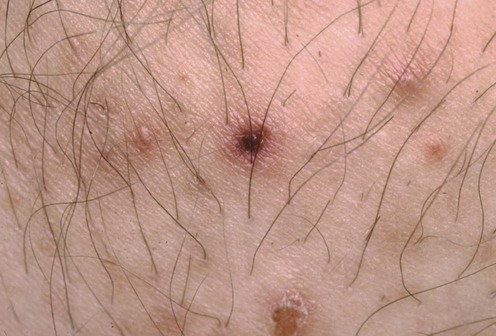Pityriasis lichenoides et varioliformis acuta

Specific investigations
First-line therapies
Second-line therapies
Third-line therapies
Transition of pityriasis lichenoides et varioliformis acuta to febrile ulceronecrotic Mucha–Habermann disease is associated with elevated serum tumour necrosis factor-alpha.
Tsianakas A, Hoeger PH. Br J Dermatol 2005; 152: 794–9.
The authors postulate that therapy with TNF antagonists may be indicated in these cases.


 Oral erythromycin
Oral erythromycin Broadband UVB
Broadband UVB Narrowband UVB
Narrowband UVB PUVA
PUVA Acitretin and PUVA
Acitretin and PUVA Methotrexate
Methotrexate Cyclosporine
Cyclosporine Dapsone
Dapsone Systemic corticosteroids
Systemic corticosteroids Intravenous immuneglobulin
Intravenous immuneglobulin Azithromycin and topical tacrolimus
Azithromycin and topical tacrolimus